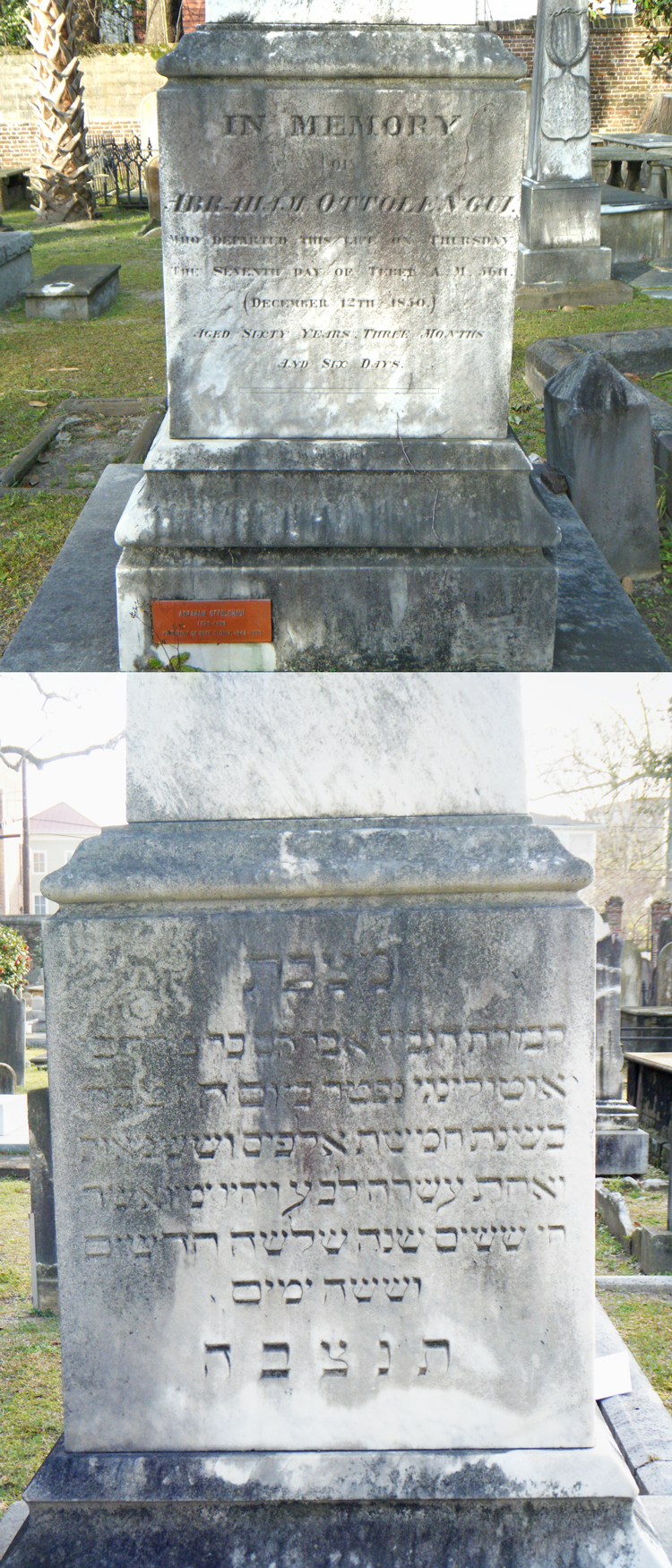LnRiLWhlYWRpbmcuaGFzLWJhY2tncm91bmR7cGFkZGluZzowfQ==
TGF0bzpyZWd1bGFy
aDEudGItaGVhZGluZ1tkYXRhLXRvb2xzZXQtYmxvY2tzLWhlYWRpbmc9ImZlNjgzODlkMWZmYmQ4ZGQ3NTdjMTg3YzhhNjA5YzIzIl0gIHsgZm9udC1zaXplOiAyNnB4O2ZvbnQtZmFtaWx5OiBMYXRvO2ZvbnQtd2VpZ2h0OiByZWd1bGFyO2xpbmUtaGVpZ2h0OiAyZW07dGV4dC1hbGlnbjogY2VudGVyO21hcmdpbi1ib3R0b206IDE1cHg7IH0gIGgxLnRiLWhlYWRpbmdbZGF0YS10b29sc2V0LWJsb2Nrcy1oZWFkaW5nPSJmZTY4Mzg5ZDFmZmJkOGRkNzU3YzE4N2M4YTYwOWMyMyJdIGEgIHsgdGV4dC1kZWNvcmF0aW9uOiBub25lOyB9IEBtZWRpYSBvbmx5IHNjcmVlbiBhbmQgKG1heC13aWR0aDogNzgxcHgpIHsgICB9IEBtZWRpYSBvbmx5IHNjcmVlbiBhbmQgKG1heC13aWR0aDogNTk5cHgpIHsgICB9IA==
TGF0bzpyZWd1bGFy
Abraham Ottolengui
Pinckney Street
TGF0bzpyZWd1bGFy
A key figure in the Charleston organ case
Abraham Ottolengui (1790–1850) was an auctioneer and the reform-minded parnas, or president, of Kahal Kadosh Beth Elohim from 1840 to 1850, the most contentious years of struggle between reformers and traditionalists. As parnas, he was named in what came to be called the Charleston organ case, when the dispute over the installation of an organ in the synagogue went to the state court of appeals as State ex relatione A. Ottolengui v. G.V. Ancker et al. In his will, Ottolengui left money to the congregation, the Hebrew Orphan Society, the Hebrew Benevolent Society, and his five children. To his wife, Sarah (1793–1864), he left four slaves, along with household furniture and other goods.

Court records, “Charleston organ case”
Court records, “Charleston organ case”
As president of Kahal Kadosh Beth Elohim, Abraham Ottolengui (1790–1850) was named in the 1846 legal dispute over who controlled the synagogue, the reform faction or the orthodox.
Gravestone of Abraham Ottolengui (1790–1850)